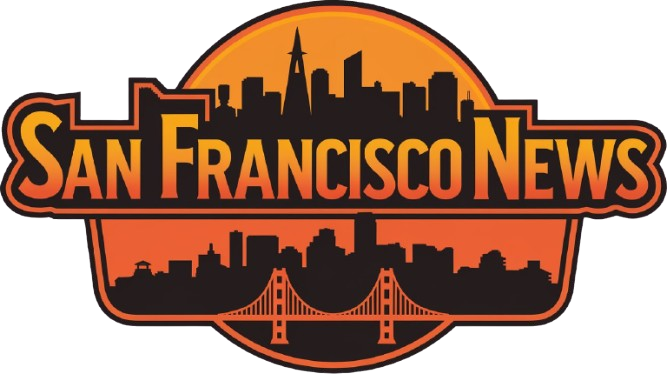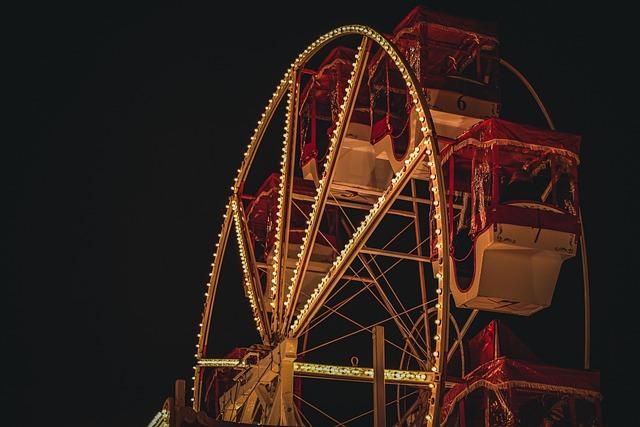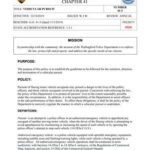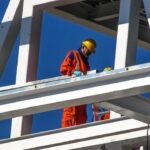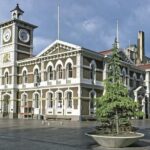The Folsom Street Fair, an annual celebration of the leather and kink communities, has once again transformed the streets of San Francisco’s SOMA neighborhood into a vibrant spectacle of creativity and expression. This year’s event, held on September 24, drew thousands of attendees, showcasing a colorful array of costumes, performances, and exhibits that highlight the diversity and inclusivity of the city’s underground culture. However, the fair’s resurgence post-pandemic has also sparked discussions about its impact on local businesses, community dynamics, and public safety. As the city navigates the balance between celebration and infrastructure, the Folsom Street Fair serves as both a cultural keystone and a focal point for ongoing dialogues about urban life in San Francisco.
Folsom Street Fair Transforming the Landscape of San Francisco’s South of Market
The Folsom Street Fair has become a vibrant fixture in the South of Market neighborhood, transforming both its cultural and social landscape. Every year, this annual event attracts thousands of attendees who gather to celebrate the spirit of inclusion, diversity, and self-expression. Known for its bold displays of sexuality and the BDSM community, the fair serves as a platform for various vendors and local businesses, boosting the economy in an area that has undergone significant gentrification in recent years. Both residents and visitors alike enjoy an array of activities, from live performances to interactive art installations.
In addition to its festive atmosphere, the Fair promotes awareness and education surrounding sexual health and safety. Attendees find resources and information on a plethora of topics, fostering a sense of camaraderie and connection. The event has not only reinforced the South of Market’s identity but has also established it as a unique destination known for its artistic and pioneering spirit. Key elements contributing to the Fair’s influence on the neighborhood include:
- Community Engagement: Local groups and charities actively participate, enhancing the sense of belonging.
- Economic Boost: Increased business for local shops and services during the event.
- Cultural Exchange: A melting pot of ideas and identities, showcased through performances and art.
- Inclusivity: Emphasizing acceptance and understanding across diverse communities.
Community Reactions and the Balancing Act of Inclusivity and Local Concerns
As the Folsom Street Fair draws crowds from across the globe, local residents of San Francisco are finding themselves torn between the celebration of inclusivity it promotes and the disruptions it brings to their everyday lives. The event is a testament to the city’s vibrant LGBTQ+ culture, showcasing a wide array of performances, art, and community spirit. However, as the streets fill with revelers, many locals express their frustrations about increased noise levels, traffic disruptions, and the challenges of navigating their own neighborhood during the fair. While the festival is intended to foster a sense of acceptance and freedom, some critics argue that it inadvertently sidelines the voices of long-time residents.
Community responses highlight a significant balancing act between supporting an iconic event and addressing neighborhood concerns. Many residents appreciate the economic boost the fair provides to local businesses, while also highlighting the need for structured dialogue between organizers and the community. A recent neighborhood meeting revealed distinct perspectives, including:
- Support for local businesses: Many shop owners see increased traffic as beneficial.
- Safety worries: Residents voiced concerns over overcrowding and public safety.
- Desire for compromise: Some seek more inclusive planning efforts for future events.
| Community Feedback | Percentage of Responses |
|---|---|
| Support the fair | 47% |
| Opposed to disruptions | 34% |
| Neutral or undecided | 19% |
Strategies for Enhancing Safety and Accessibility During Major Events
During events like the Folsom Street Fair, implementing effective strategies to bolster safety and accessibility is crucial in creating an enjoyable atmosphere for all attendees. Proper crowd management is essential; employing trained staff and volunteers to guide crowds, monitor areas, and assist with any emergencies can significantly enhance safety. Additionally, establishing clear signage throughout the venue can facilitate navigation, particularly for those with disabilities. Consider the following strategies:
- Effective Communication: Utilize loudspeakers and social media updates to disseminate real-time information.
- Accessibility Audits: Conduct thorough assessments pre-event to identify and improve accessible pathways.
- Emergency Protocols: Develop and clearly communicate evacuation procedures to ensure swift responses.
- Rest Areas: Designate shaded rest areas equipped with seating for attendees needing a break.
Investing in transportation options can also enhance accessibility for those traveling to the event. Partnering with local transit agencies to increase service frequency and create drop-off points can ease congestion and promote inclusivity. Offering shuttle services from key locations can further assist attendees in mobility. Here’s a suggested table outlining potential transportation solutions:
| Transportation Option | Benefits |
|---|---|
| Public Transit | Cost-effective and eco-friendly |
| Shuttle Services | Direct access from popular locations |
| Rideshare Programs | Convenient for small groups and individuals |
To Conclude
As Folsom Street Fair draws to a close, the vibrant celebration of LGBTQ+ culture, community, and leather subculture leaves an indelible mark on San Francisco’s South of Market neighborhood. This year’s event not only showcased the resilience and creativity of its attendees but also highlighted ongoing discussions about inclusivity, safety, and urban space utilization in one of the city’s most iconic districts. As the streets return to their usual cadence, the community reflects on the fair’s impact, both as a celebration and a reminder of the diverse tapestry that makes San Francisco unique. Moving forward, the conversation around such gatherings continues, as residents, business owners, and organizers navigate the balance between cultural expression and neighborhood dynamics. With the echoes of celebration still resonating, the Folsom Street Fair solidifies its role as a pivotal event in the city’s cultural calendar, leaving many eager for next year’s festivities.
